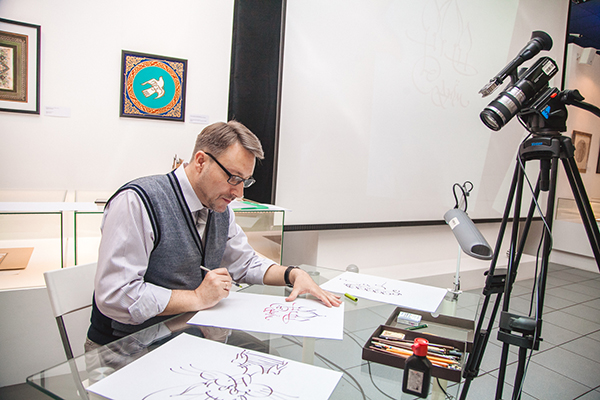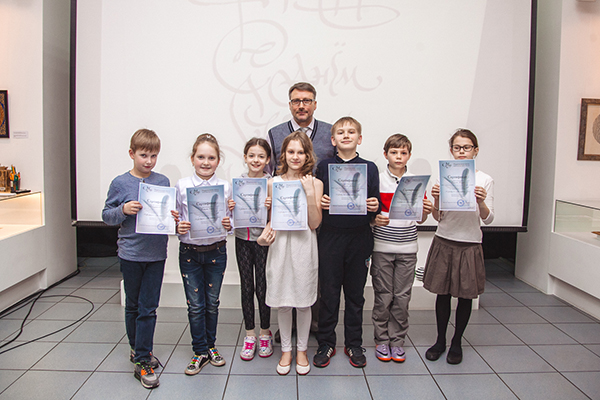School tutor Artyom Lebedev's commentary on the children's course

1. Why does a child need calligraphy?
When we write, we think, and we think not only about the meaning of our writing, but also about its visual aspect. Calligraphy develops fine motor skills and therefore fosters the development of cognitive faculties. This is due to the fact that 1/3 of the cerebral cortex is constantly active during the calligraphy lesson. Calligraphy makes us think about every letter, about every move. It certainly takes more time than simply writing with a ball point pen, but it is also more useful.
Calligraphy lessons will not only teach your children to write beautifully, but will also give rise to their creativity. This will also teach children to discipline their mind, which will directly affect their focus and diligence in general.
Moreover, letters can say a lot about the nation's historical experience as scripts change during the course of time. Therefore, by learning different scripts, especially historical, we get closer to our history.
2. Will this course help to improve my child’s handwriting?
First of all, it is a calligraphy course, not one of penmanship. However, one flows out of another. Therefore, this course will also influence a child's handwriting quality. Handwriting is like a fingerprint, it is unique, and through it, the personality is revealed. A person masters the art of writing and learns from letters – learns to be creative, disciplined and neat at the same time.
No matter what kind of writing children study in the calligraphy lessons, they learn to understand the letter's structure, to keep up with the tempo and accuracy of writing. And these skills may later, sometimes unknowingly, transfer to their daily school handwriting. Some children demonstrate these changes earlier, some later, because all children are different and unique. The calligraphy lessons will help them to express their individuality and to channel it in the right direction.
3. Will there be any homework? Will there be a lot of it? How to organize a working area for lessons at home?
Home practice is essential for achieving visible results. It's the same as with training for sports and rehearsal of musical. Before learning to write letters you exercise in writing the parts of the letters and you do it until you can easily write them properly every time. The next stage is making letters out of these strokes and, again, you try until you can do it automatically. Certainly, you need to know when enough is enough: no need to practice till you can't feel your fingers. It's not a big thing if it doesn't work out in the beginning. Daily practice of 40-45 minutes is enough. Initial results will be noticeable after 3 or 4 lessons.
As to working area organization, the most important thing is to make it comfortable for the learner. Nothing should distract them from the exercises. The elbows should lie on the table. One arm holds the paper, while the other traces out the letters. The light source should be on the child's left (if the child is right-handed). The sheet must lie at an angle, the bottom left corner should be lower than the right.
4. Should the parents help their child with home tasks? How to do it right?
Parents may help at first, till their child makes confident moves. However, you may provide technical guidance rather than helping them to write, by watching that they hold the pen with three fingers and at the right angle, that they don't scratch the paper, and keep their back straight.
5. Should my child have some specific skills for taking up the calligraphy course?
Calligraphy is for everyone. If the child shows interest in it and just a bit of diligence, they will succeed.

Sign up for the course
To register please fill in all fields
Sign up for the course
To register please fill in all fields